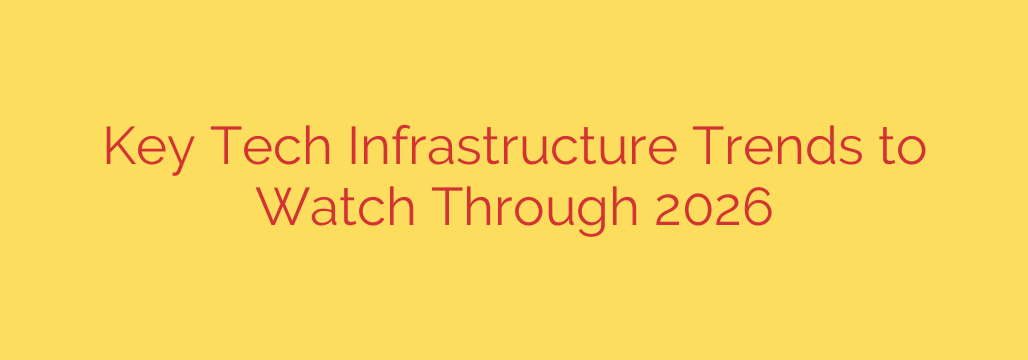
The technological landscape is undergoing a rapid transformation, with key infrastructure trends shaping the future of business and daily life through 2026 and beyond. Organizations must strategically invest and adapt to stay competitive and resilient.
One dominant trend is the evolution of cloud infrastructure. While public cloud adoption continues its strong trajectory, we’re seeing a significant shift towards hybrid and multi-cloud architectures. This approach offers greater flexibility, compliance control, and optimized cost structures, allowing businesses to leverage the best services from various providers while maintaining on-premises components where necessary. The focus is increasingly on cloud-native development and managing these diverse environments effectively through advanced management tools.
Another critical area is the proliferation of edge computing. As more data is generated outside traditional data centers – from IoT devices, retail locations, and remote workplaces – processing capabilities are moving closer to the source. This reduces latency, improves performance for applications like real-time analytics and autonomous systems, and decreases bandwidth demands on central networks. Building robust and secure edge infrastructure is becoming a priority for many industries.
The exponential growth in data generation is driving the need for more sophisticated data infrastructure. This includes advancements in storage technologies, high-performance computing for analytics and AI workloads, and intelligent data management platforms. The ability to collect, process, and analyze vast datasets quickly and efficiently is paramount for extracting valuable insights and enabling data-driven decision-making. AI and Machine Learning infrastructure specifically is seeing massive investment, requiring specialized hardware and software stacks optimized for training and inference.
Cybersecurity infrastructure remains a paramount concern and is constantly evolving. With distributed environments (cloud, edge, remote work), the traditional perimeter has dissolved. Trends point towards strengthening zero trust architectures, enhancing identity and access management (IAM), leveraging AI for threat detection and response, and securing increasingly complex supply chains. Infrastructure must be built with security fundamentally integrated, not as an afterthought.
Finally, sustainability is no longer a niche consideration but a core requirement for IT infrastructure. Organizations are under pressure to reduce their environmental footprint. This translates to a focus on energy efficiency in data centers, utilizing renewable energy sources, optimizing hardware lifecycle management, and designing more efficient cooling and power systems. Building green IT infrastructure is becoming both an ethical responsibility and a business imperative.
Keeping pace with these trends requires continuous monitoring, strategic planning, and investment in the right technologies and skills to build the foundation for future innovation and operational excellence.
Source: https://www.datacenters.com/news/the-future-of-technology-infrastructure-trends-to-watch-through-2026








